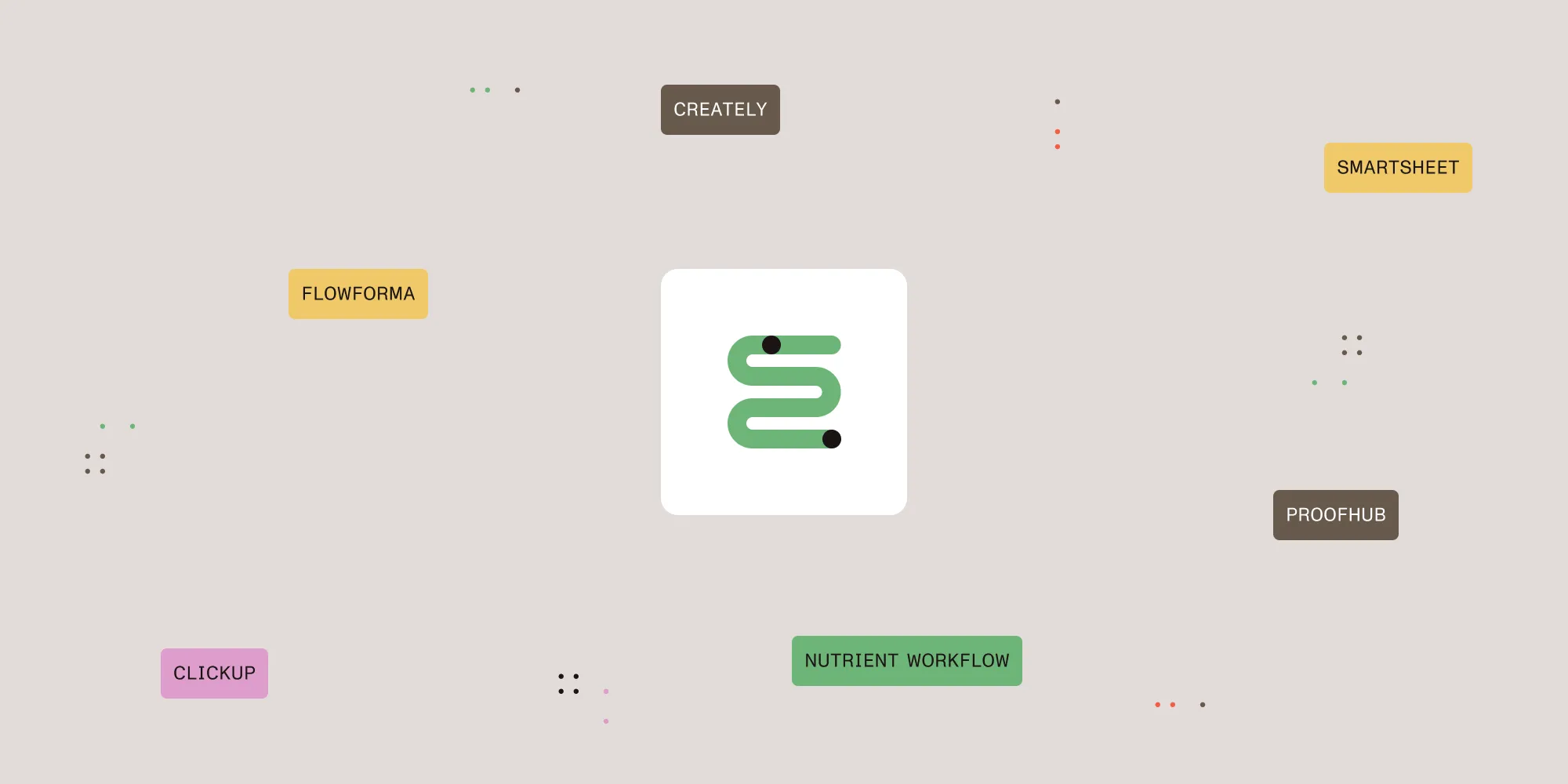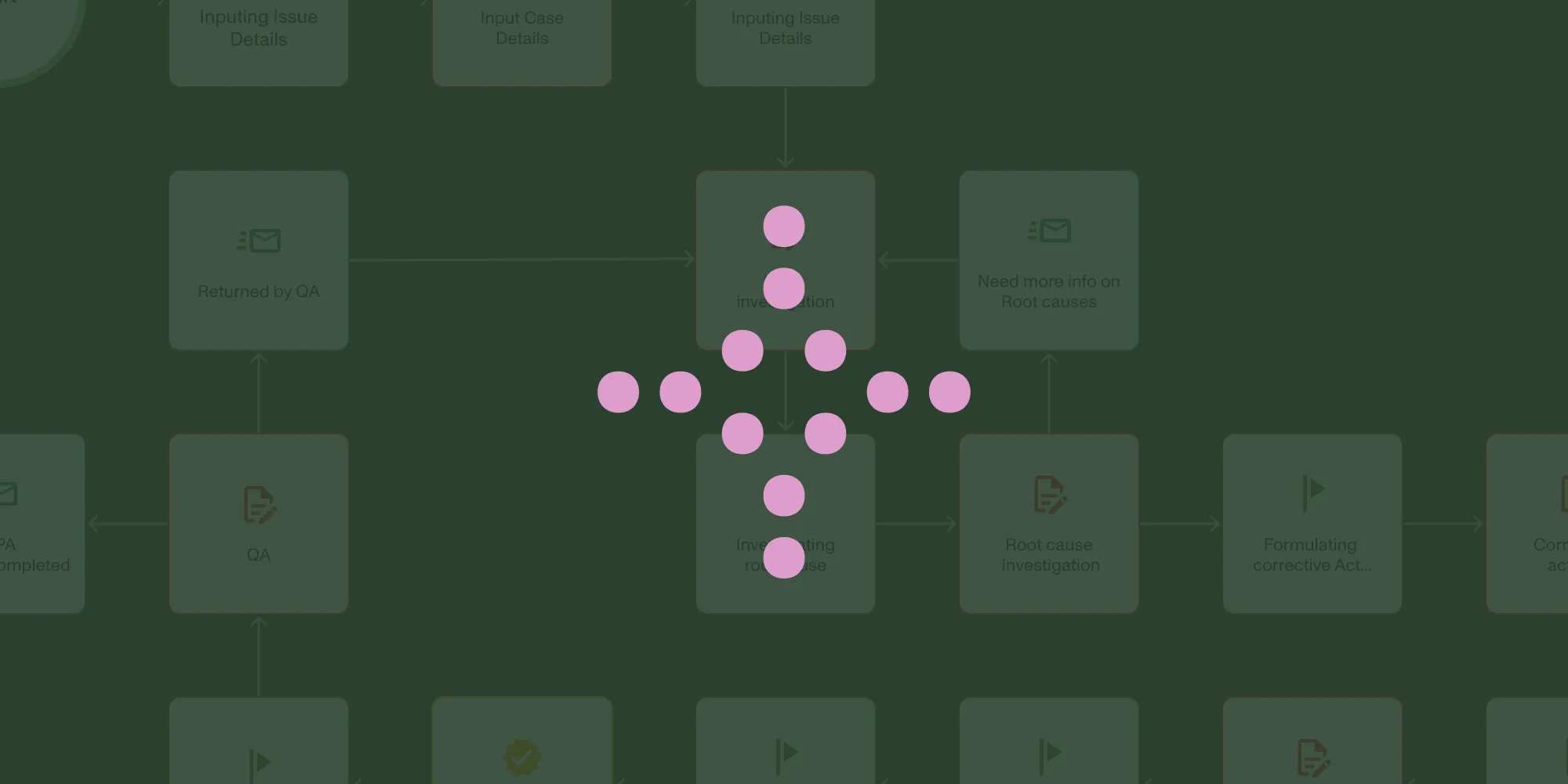Task automation: AI‑driven automation and RPA for repetitive work
Table of contents

- What and why — Task automation software (RPA, AI‑driven automation, ML) automates repetitive tasks — data entry, approvals, notifications — to boost process efficiency and drive productivity improvement.
- Core technologies
- AI‑driven automation for unstructured data parsing and predictive decisioning
- Robotic process automation (RPA) bots mimic user actions on legacy UIs
- Machine learning for anomaly detection, classification, and forecasting
- Automation integrations and APIs for seamless system‑to‑system orchestration
- Key benefits — Reduced manual handling, fewer errors, faster cycle times, improved visibility, and higher employee satisfaction
- Getting started
- Map and standardize your current workflows.
- Pilot with high‑volume, rule‑based tasks using workflow automation tools.
- Monitor KPIs (tasks/hour, error rates, SLA compliance) via real‑time dashboards.
- Scale across teams with clear change management and exception‑handling paths.
Try our workflow automation tools free for 14 days and see how easy it is to automate repetitive tasks.
Task automation software leverages AI‑driven automation, robotic process automation (RPA), machine learning, and integrations to automate repetitive tasks and streamline end‑to‑end workflows. By embedding automated workflow management and workflow automation tools into daily operations, organizations achieve dramatic gains in process efficiency and drive measurable productivity improvement.
Definition of task automation
Task automation is the practice of using task automation software to automate repetitive tasks and complex workflows. By automating data entry, notifications, approvals, and more, businesses eliminate manual handling, boost process efficiency, and free human resources for strategic initiatives, in turn driving significant productivity improvement.
Key enabling technologies
Modern automated workflow management relies on several complementary technologies, outlined below.
AI‑driven automation
Artificial intelligence (AI) — particularly natural language processing (NLP) and computer vision — enables your automation platform to:
- Interpret unstructured data (e.g. parse invoices, emails, or scanned documents)
- Make smart decisions via predictive models (e.g. route a high‑risk claim to a senior analyst)
- Continuously improve through feedback loops, reducing manual exceptions over time
Robotic process automation (RPA)
Robotic process automation (RPA) deploys software “robots” that mimic user interactions with applications when no APIs exist. Examples include:
- Screen scraping to extract data from legacy UIs
- Automating routine clicks and keystrokes (e.g. copying data between systems)
- Scaling quickly by converting manual, repetitive sequences into bot‑driven tasks
Machine learning
Machine learning (ML) applies statistical models within your workflows to:
- Detect anomalies (e.g. flag unusual transactions before they slip through)
- Classify content automatically (e.g. auto‑tag support tickets by topic or priority)
- Forecast outcomes (e.g. predict next month’s workload and trigger capacity‑adjusting tasks)
Automation integrations and APIs
Robust integrations and APIs tie everything together, ensuring data flows seamlessly. Examples of these include:
- Prebuilt connectors for popular SaaS and enterprise apps (Salesforce, SAP, Microsoft 365, Slack, etc.)
- Custom API orchestration for in‑house or niche systems
- Event‑driven triggers that launch workflows the instant a data change or message arrives
By combining AI‑driven automation, RPA, machine learning, and rich integrations, organizations can automate repetitive tasks, boost process efficiency, and drive measurable productivity improvements.
Types of tasks that can be automated
This section outlines the types of tasks best suited for automation, helping organizations identify where they can save time and reduce errors through technology. From routine daily actions like sending reminders and generating reports, to more complex, data-driven processes like analysis and payroll, automation can streamline a wide range of functions. By categorizing tasks into daily, monthly, and data management activities, this section highlights how different types of automation — such as workflow tools, robotic process automation (RPA), and AI-driven systems — can be applied effectively across your operations.
Daily and weekly tasks
Everyday tasks are prime candidates for workflow automation tools:
- Data entry — Automate input into systems to save time and reduce errors.
- Notification sending — Automatically send updates, reminders, or alerts.
- Information retrieval — Fetch and compile data from multiple sources in seconds.
- Task reminders — Trigger automated reminders so nothing slips through the cracks.
- Report generation — Generate and distribute reports without human intervention.
Recurring monthly tasks
Monthly processes follow scheduled patterns, which are tasks that are ideal for RPA:
- Bill payments — Automate recurring payments to avoid late fees.
- Invoicing — Generate and send invoices automatically.
- Payroll processing — Calculate and disburse salaries accurately and on time.
Data management tasks
Data‑centric tasks benefit from AI‑driven automation and ML:
- Data collection and entry — Automate ingestion into databases or spreadsheets.
- Data processing — Process large volumes quickly and accurately.
- Data analysis — Generate insights and dashboards with no manual effort.
Task automation software
Task automation tools vary based on complexity and use case. For instance, a tool like Zapier(opens in a new tab) can be used when the tasks involve straightforward integration between web-based systems —like sending a Slack(opens in a new tab) notification when a social media post mentions your company name.
In other cases, you may want to automate tasks related to a customer submitting a complaint form or requesting a significant capital expenditure. You’ll want to look into a task automation platform with robust integration capabilities in these cases. These tools can help you lay out your tasks in a visual way that helps deal with the complexity and socialization of the process.
Creating automated workflows can enhance efficiency and streamline processes within teams. These workflows facilitate various tasks such as form approvals and employee onboarding, allowing teams to focus on more important activities and reduce the potential for errors associated with manual processes.
Building processes with automated tasks
Task automation software has become increasingly popular thanks to user-focused task workflow tools that simplify complex designing tasks. In most cases, tasks are arranged using a drag-and-drop interface, allowing various task types to be arranged and connected to simulate the real-world task workflow. This is also sometimes referred to as workflow automation.
Automating business processes is crucial for enhancing efficiency and productivity within organizations. Tools like Wrike and Microsoft Power Automate can streamline these processes through automation, making them accessible for users with varying levels of technical expertise, while ultimately transforming workflow management across various tasks.
The tasks in a process can include forms to be completed, approvals to be provided, assignment of work, triggering of another system, data retrieval, and sending emails and alerts. Most task automation software includes a variety of prebuilt tasks like these that can be arranged sequentially or in parallel based on the order tasks typically follow.
Business rules
A workflow engine (sometimes called a business rules engine) is an application that runs within a task automation system and makes decisions automatically based on preset rules. These decisions usually involve deciding how a task should be accomplished, who should do it, how to know when it’s completed, and what needs to be done next.
For instance, you might have a task that’s part of the process for onboarding new hires. The task is ensuring a new hire is correctly entered into the payroll system. Here are some potential questions:
- How should the task be accomplished? — Selecting the proper salary classification for the new hire.
- Who should do it? — The HR administrator for the new hire’s region.
- How will we know the task is completed? — When the salary classification is selected and submitted.
- What needs to be done next? — The salary classification must be reviewed and approved by the HR director.
This task could be automated in several ways:
- As the new hire is entered into the system, the salary classification is automatically added based on the title or other data.
- The task could be automatically assigned to the proper HR administrator based on the new hire’s office location.
- A new task could automatically be assigned to the HR director upon submission.
- If the selected salary classification is inappropriate for the title and department, it could automatically come back to the HR administrator for adjustment.
Task collaboration
Even with powerful automation, human collaboration remains critical. Workflow automation tools often include built‑in chat, comments, and alerts so stakeholders can resolve exceptions, ask questions, and ensure smooth handoffs.
Benefits of automating task workflows
- Reduced manual handling
- Reduced errors
- Policy compliance adherence
- Improved visibility
- Improved employee satisfaction
- Continual process improvement
- Better workload management
- Reduced approval cycles
Common challenges and pitfalls in task automation (and how to solve them)
| Challenge/pitfall | Why it happens | Potential solution |
|---|---|---|
| Unclear or incomplete process definition | Automating a poorly documented workflow propagates errors and hidden steps into your automated workflow. | Map and standardize processes first (use swim lanes or a RACI matrix); run pilot tests and walk through every branch before full rollout. |
| Poor data quality and inconsistent formats | Automation engines choke on malformed, missing, or inconsistent input data (dates, codes, free text). | Build in data‑validation rules (e.g. required fields, regex checks); leverage ML‑powered anomaly detection to flag outliers before they enter the pipeline. |
| Integration complexity | Connecting to legacy systems or custom in‑house apps may require brittle UI-scraping or fragile scripts. | Prefer prebuilt connectors or middleware when available; use APIs or microservices for robust, versioned integration points. |
| Over-automation (“set and forget”) | Once deployed, workflows may drift out of alignment with business changes, creating “shadow processes.” | Include human checkpoints and exception‑handling routes; schedule regular audits of automated workflows and exception logs. |
| Change management resistance | Users feel threatened by bots replacing their tasks, or are unsure how to handle exceptions and escalations. | Communicate clear ROI and pain‑point relief; provide in‑app guidance, quick‑reference cheatsheets, and targeted training sessions. |
| Unmanaged exceptions and error handling | When an unexpected condition arises, the automation may fail silently or produce incorrect outputs. | Design explicit exception paths (e.g. “if X fails, notify Y and pause”); log all errors centrally and send real‑time alerts to a support queue. |
| Security and compliance gaps | Automated scripts with broad permissions can expose data or bypass audit controls. | Use role‑based access controls for bots; maintain an audit trail of all automated actions; encrypt sensitive data in transit and at rest. |
| Scalability and performance bottlenecks | Workflows that run fine at small scale may time out or starve resources under heavy load. | Implement rate‑limiting and queuing mechanisms; monitor performance metrics (latency, throughput) and autoscale your execution environment. |
| Lack of monitoring and visibility | Without dashboards, you can’t see where tasks are backing up or if SLAs are at risk. | Build real‑time dashboards and SLA alerts into your automated workflow management platform; use KPIs like “tasks completed per hour,” “error rate,” and “average exception turnaround.” |
| Underestimating total cost of ownership (TCO) | Licensing, maintenance, and development overheads pile up after initial deployment. | Model TCO, including support, updates, and infrastructure; start with a small proof of concept, and then expand incrementally to control costs. |
Want to learn more?
Nutrient Workflow Automation is an easy-to-use yet robust task automation platform for enterprise-level automation needs. If you’d like to see Nutrient Workflow in action, request a live demonstration or watch a recorded demo.
FAQ
Task automation software uses AI‑driven automation, robotic process automation (RPA), and machine learning to orchestrate end‑to‑end workflows — far beyond simple scripts. Unlike a one‑off macro, it integrates with multiple systems via prebuilt connectors or APIs, applies business rules and exception handling, and provides real‑time monitoring and dashboards for ongoing automated workflow management.
Start with high‑volume, rule‑based tasks that consume significant manual effort or introduce frequent errors — such as data entry, invoice approvals, and notification sending. Use your workflow automation tools to map current state processes, estimate time savings, and pilot with a small proof of concept. Early wins demonstrate productivity improvement and build momentum for broader automation.
Common pitfalls include brittle screen‑scraping scripts that break on UI changes, lack of API endpoints, and handling authentication securely. Mitigate these by choosing RPA platforms with strong connector libraries, layering in middleware for stable API orchestration, and enforcing role‑based access controls on your bots to meet security and compliance requirements.
AI‑driven automation brings advanced capabilities like natural language processing (NLP) for unstructured data parsing, predictive routing based on historical patterns, and anomaly detection to catch data quality issues before they disrupt your processes. Machine learning models can continuously refine decision logic — reducing exception rates and increasing overall process efficiency.
Leverage your task automation software’s real‑time dashboards and KPI metrics — such as tasks completed per hour, error rates, SLA compliance, and exception turnaround times — to gain full visibility. Set up alerts for key thresholds and schedule periodic audits of your automated workflows to catch drift or “shadow processes” before they impact performance.
Calculate direct savings from reduced manual hours, error remediation costs, and faster cycle times. Compare these against licensing fees, development effort, and ongoing maintenance. Use phased rollouts — starting with a small pilot — to benchmark improvements in productivity improvement and refine your TCO model before scaling enterprise‑wide.
Design explicit exception paths that route failed tasks to a human reviewer, complete with notifications and audit trails. Proactively involve stakeholders by showcasing early successes, aligning automation goals with individual productivity metrics, and offering targeted support, thereby turning skeptics into champions of automated workflow management.
Yes. Leading task automation software unifies RPA bots for UI‑centric tasks, AI‑driven automation for intelligence and decisioning, and API integrations for direct system‑to‑system communication, providing a single pane of glass to orchestrate all your repetitive and complex processes.







